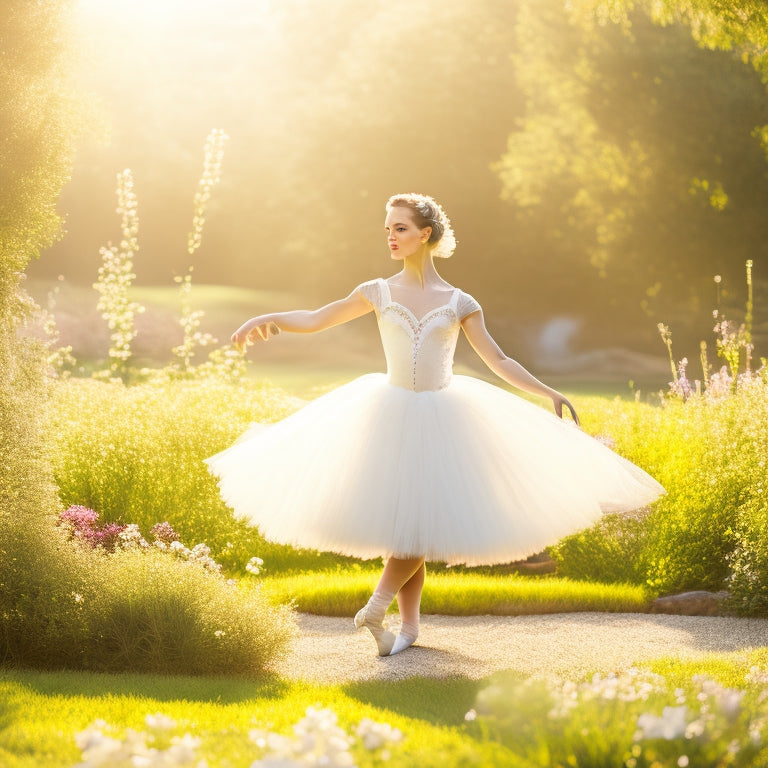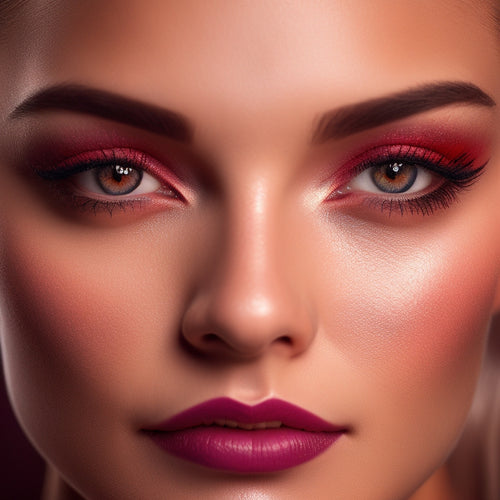
Can You Wear Real Ballet Shoes Outside?
Share
You shouldn't wear real ballet shoes outside because they're specifically designed for the studio floor. They're crafted for support, flexibility, and traction on a smooth surface, not for traversing rough outdoor terrain. Wearing them outside can damage the shoes and put you at risk of injury from slips, trips, and falls. By reserving your ballet shoes for the studio, you'll maintain their performance and guarantee your safety. To learn more about preserving your ballet shoes and finding suitable alternatives for everyday wear, explore the importance of proper shoe care and alternative footwear options that prioritize your comfort and wellbeing.
Key Takeaways
• Wearing ballet shoes outside can damage the shoes and put the wearer at risk of slips, trips, and falls.
• Outdoor surfaces can degrade the shoes' performance, causing them to wear out faster.
• Ballet shoes are designed for studio use, and wearing them outside compromises their performance and the dancer's safety.
• It's recommended to reserve ballet shoes for studio use and opt for alternative footwear for daily wear.
• Wearing ballet shoes outside can lead to injuries, such as sprains and strains, and compromise the dancer's physical and mental wellbeing.
Ballet Shoes: Designed for a Purpose
Designed specifically for the demands of ballet technique, your ballet shoes are crafted to provide excellent support, flexibility, and traction, allowing you to move with precision and control in the studio.
As you slip them on, you're connecting with centuries of dance history, tracing back to the ballet origins of 15th-century Italy. Your shoes are engineered to meet the unique needs of ballet dancers, with a snug fit, soft materials, and a carefully designed sole. They're made to help you execute intricate movements, turns, and leaps with ease, not to withstand the rough conditions of outdoor surfaces.
Outdoor Surfaces and Their Effects
As you step out of the studio and onto outdoor surfaces, you're exposing your ballet shoes to a harsh environment that can quickly degrade their performance and shorten their lifespan.
Outdoor surfaces can be unforgiving, and you need to be aware of the risks. Slippery pavements can cause your shoes to slip and slide, damaging the soles and uppers.
Rough terrain, such as gravel or rocky paths, can scratch and scrape the materials, weakening the glue and stitching.
Even smooth surfaces like sidewalks or bike paths can cause excessive wear on the soles, especially if you're not used to dancing on them.
Safety Concerns for Dancers
When you wear real ballet shoes outside, you're not only risking damage to the shoes themselves, but you're also putting yourself at risk of injury from slips, trips, and falls. As a dancer, you know that preventing injuries is vital for your physical and mental wellbeing.
Outside surfaces can be unforgiving, and a single misstep can lead to a sprain, strain, or even a more severe injury. By wearing ballet shoes outside, you're compromising your safety and increasing the likelihood of an injury that could keep you from dancing.
Prioritize injury prevention and protect your physical and mental wellbeing by keeping your ballet shoes reserved for the studio floor.
Alternative Options for Everyday Wear
Explore alternative footwear options that provide the necessary support and comfort for your daily activities while keeping your ballet shoes reserved for the studio. As a dancer, you need shoes that can keep up with your active lifestyle.
Fashion sneakers are a great option, offering arch support and cushioning for casual outings. For a more dressy look, street flats can provide a comfortable and stylish alternative to ballet shoes. Look for shoes with breathable materials, soft insoles, and a snug fit to guarantee your feet stay happy and healthy.
Caring for Your Ballet Shoes
You need to treat your ballet shoes with care to guarantee they remain a trusted partner in your dance journey, providing maximum support and performance. Proper storage is essential to maintain their condition.
When not in use, store your shoes in a cool, dry place away from direct sunlight. Avoid stacking them or storing them in tight spaces, as this can cause creases and damage to the materials.
Gentle cleaning is also important to prevent dirt and sweat buildup. Use a soft, dry cloth to wipe away dirt and moisture. Avoid using harsh chemicals or excessive water, as this can damage the materials and compromise the shoes' performance.
Frequently Asked Questions
Can Ballet Shoes Be Worn With Socks?
When you slip on ballet shoes, you're probably wondering, "Can I wear them with socks?" Technically, you can, but for everyday wear, it's best to go sans socks to maintain the shoe's fit and feel in casual outfits.
How Do I Choose the Right Ballet Shoe Size?
'When choosing the right ballet shoe size, you'll want to take into account your foot length and heel shape. Measure your foot from heel to toe, and try on shoes to guarantee a snug fit that supports your heel and toe alignment.'
Can I Wear Ballet Shoes for Other Dance Styles?
As you step into the studio, your ballet shoes whisper promises of elegance. But can you wear them for other dance styles? Absolutely! You can fusion Jazz techniques with ballet's fluidity or tap into Tap inspirations, exploring new rhythms.
Do Ballet Shoes Come in Different Widths?
When you're shopping for ballet shoes, you'll find width options ranging from narrow to extra-wide, offering various fit varieties to guarantee a comfortable, snug fit that supports your performance, whether you're a beginner or a seasoned dancer.
Can I Wear Ballet Shoes for a Wedding?
You're wondering if you can wear ballet shoes to a wedding as part of your wedding attire. While they're elegant, they're not suitable for formal events; opt for dress shoes or heeled sandals instead.
Related Posts
-

Long-Lasting Dance Makeup: Tips for a Flawless Finish
To achieve a long-lasting dance makeup look, start by preparing your skin through cleansing, moisturizing, and exfoli...
-

Dance Poster Showcases Array of Dance Styles
In addition to showcasing a diverse array of dance styles, dance posters provide a visually engaging tool for cultura...
-

Barbara Ana's Dancer: Enchanting Cross Stitch Pattern
Barbara Ana's Dancer is a captivating cross stitch pattern that captures the essence of festive stitching. This charm...


